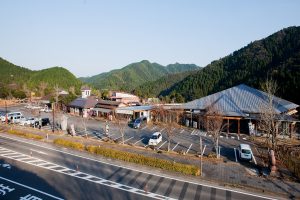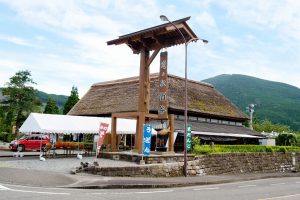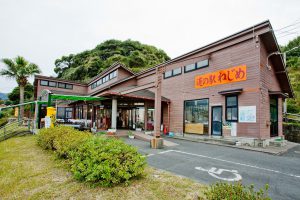Roadside Station Yabatopia
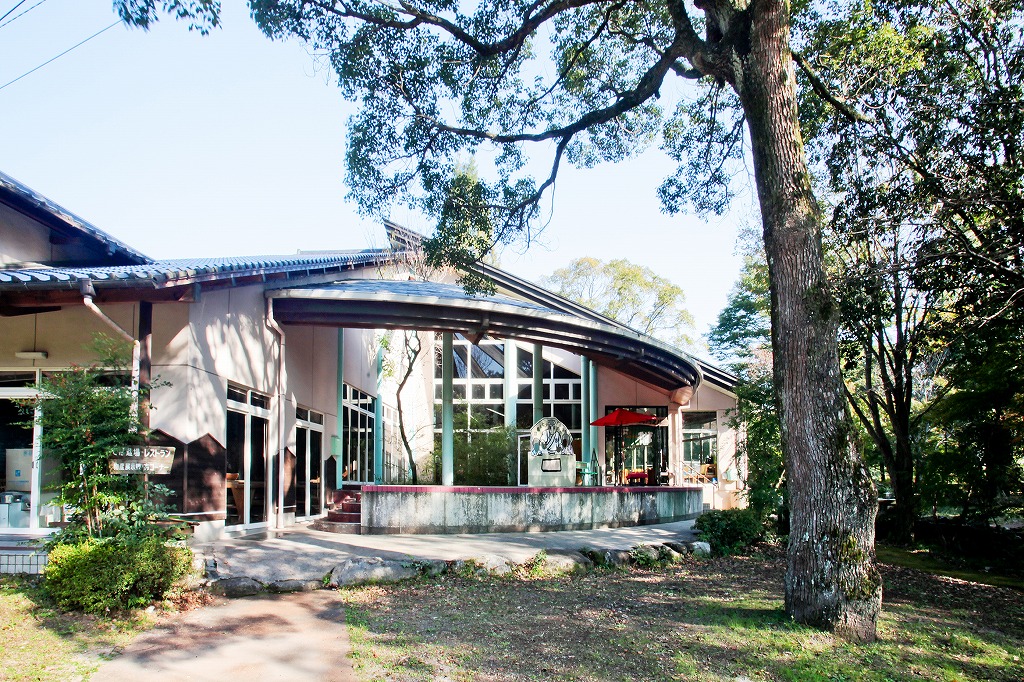
Index
Variety of original soba products
You can't talk about a roadside station without mentioning soba.
Honyabakei, known for the scenic Ao no Domon (Blue Cave Gate) and Rohanji Temple, both dug by Zenkai Wako, is also a long-time soba (buckwheat) producing area. The core facility of "Roadside Station Yabatopia" is not a product center, but a soba specialty restaurant, "Soba Restaurant Ishiuzutei Domon Soba. The soba noodles are ground on a millstone. In addition, they have developed a variety of products using buckwheat flour. There is even a warehouse dedicated to buckwheat seeds and a dojo where visitors can try their hand at buckwheat noodle making. In March 2024, the Ao no Domon/Rohanji Interchange on the Nakatsu-Hita Road will open, making the roadside station conveniently accessible right after exiting the interchange.
Roadside Station YAMATOPIA Basic Information
| Location | 2193-1 Sogi, Honyabakei-cho, Nakatsu City, Oita Prefecture |
|---|---|
| Phone number | 0979-52-3030 |
| Business Hours | 9:00-17:00 Restaurant 11:00-14:00 |
| Access | 1 minute from Ao no Doumon/Rohanji Interchange on Nakatsu-Hita Road |
| Official HP | https://www.doumonsoba.com/ |
Map of Roadside Station YAMATOPIA
Roadside Station YAMATOPIA Gourmet Information
The best way to eat it: Spicy Yuzu Pork Bone Soba Ramen
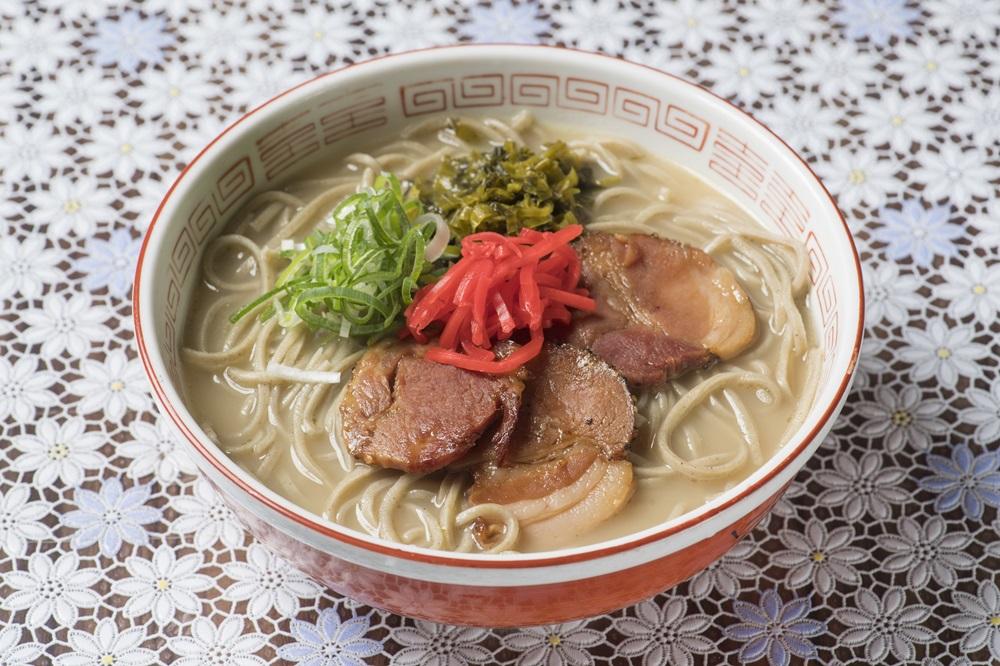
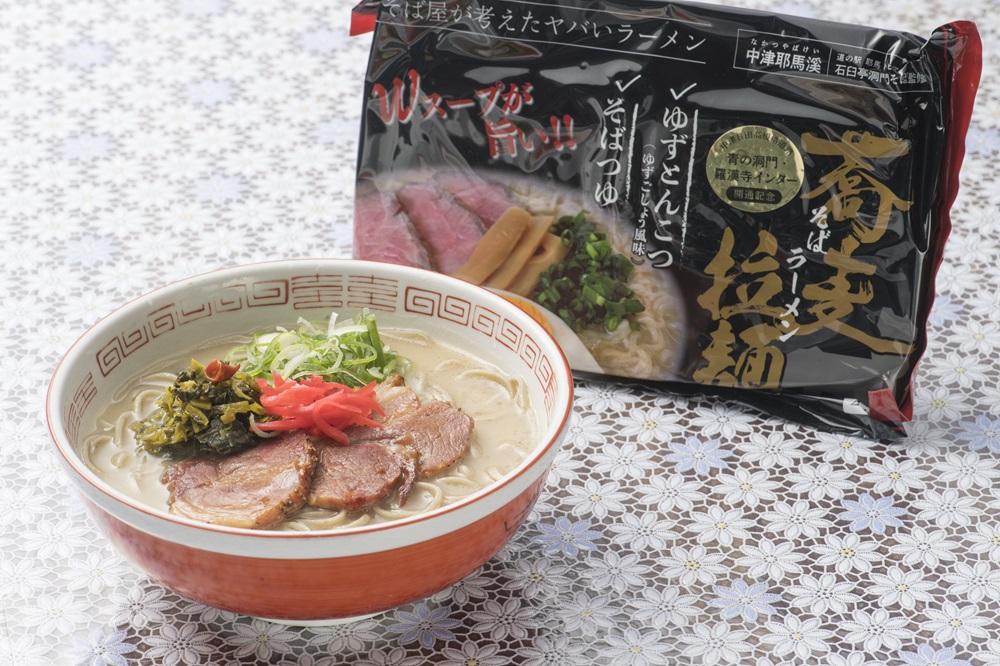
Speaking of soba, zarusoba (cold soba) and kakesoba (hot soba) with ingredients such as shrimp tempura, deep-fried tofu, meat, and tsukimi (moonfish) on top are the standard. Of course, the soba menu at the roadside station is orthodox, but the station's original "Soba Ramen" is a unique menu item. Even though it is called ramen, the noodles are made from buckwheat. The noodles are made in a different way from conventional soba noodles so that they blend well with the pork bone-flavored ramen broth. In fact, buckwheat sauce is added to the soup to give it richness and depth, and yuzu pepper is also added to give it a spicy flavor. This is a perfect match for the straight buckwheat noodles. The chashu pork is seasoned and served again. 930 yen (tax included). In February 2024, the company will also launch "Soba Ramen" with dried noodles for souvenirs. A bag of two servings is 850 yen.
Let's Eat Soba Products
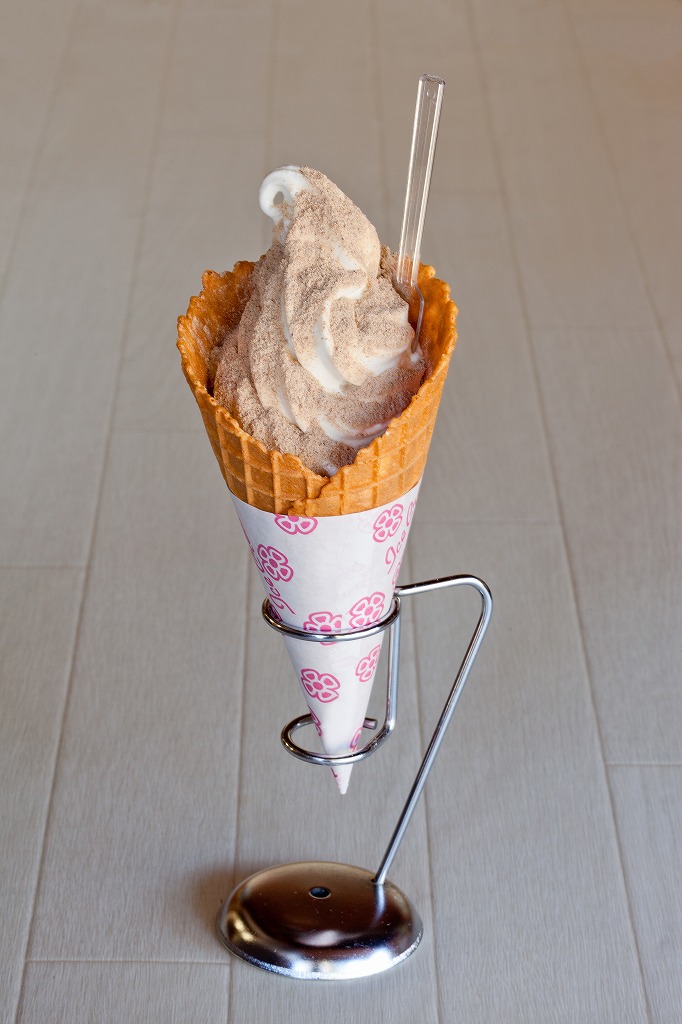

Another attraction of this station is the products that make full use of buckwheat. In addition to dried buckwheat noodles, there are also "soba ramen," "soba shochu," "soba coffee," and more. In addition, "Sovara" (buckwheat flour), made from roasted buckwheat flour, has been developed and even patented. They even patented it. There is even a "Sobara Bako Manju" (buckwheat paste) kneaded into the skin of the buckwheat. The "Sobara Soft" available at the take-out store is vanilla soft serve with a generous amount of "sobara" sprinkled on top, giving it a truly savory taste. This YAMATOPIA is a roadside station that truly loves soba and is dedicated to soba. Soba Coffee 250 yen, Sobanko Manju 190 yen, Sobanko Soft 390 yen (tax included).
Around Roadside Station YAMATOPIA
Ao no Domonomon
If you want to have fun in the area
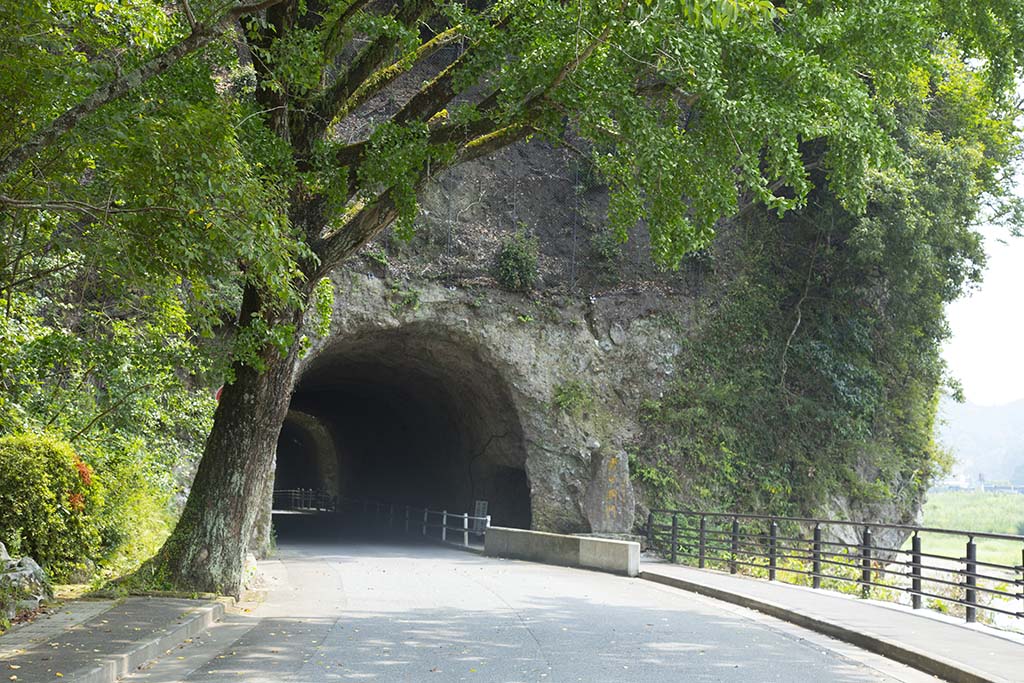
During the Edo period (1603-1867), the Hida and Ao districts at the foot of Koshuho (Mt. Koshuho) were protected by iron chains built on the steep cliffs of Koshuho, and many people and horses were killed in crashes. In 1750, the first phase of construction was completed, and in 1764, the 342-meter-long cave gate was completed. After the first phase of construction, a toll of "4 fen for people and 8 fen for cattle and horses" was collected to cover the cost of the work, and it is said to be the first toll road in Japan. The Ao no Domon was extensively renovated in the late Meiji period (1868-1912) and lost much of its original form, but hand-dug portions of the tunnel and light windows still remain, which are reminiscent of those days.
Lhakhanji Temple
If you want to have fun in the area
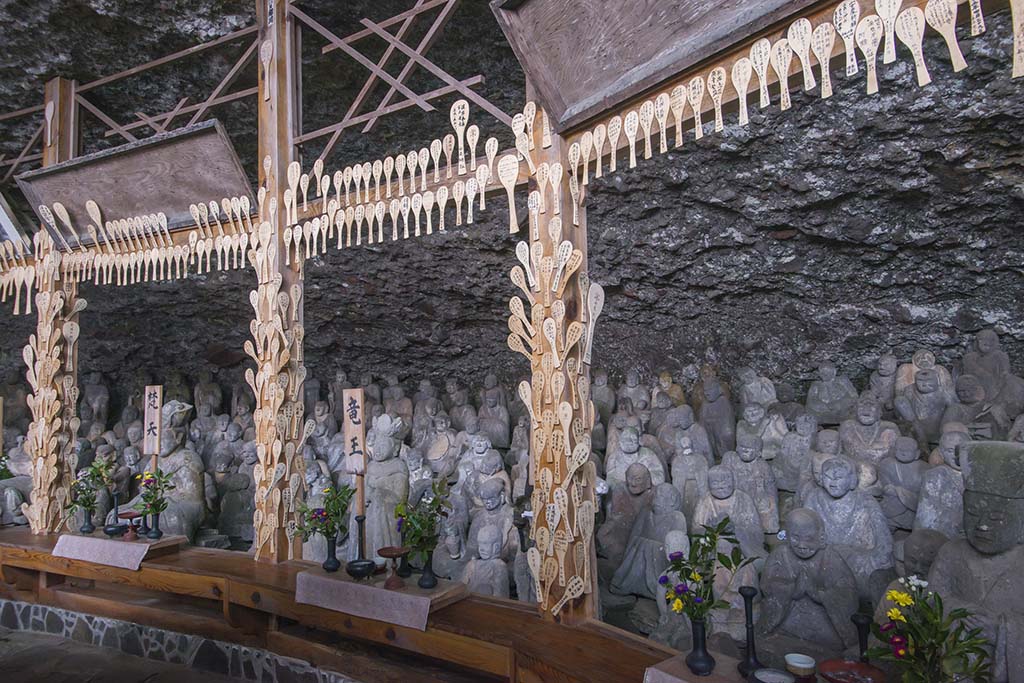
Rohan-ji Temple, located halfway up steep Mt. Rohan in Yabakei, is said to have originated in 645, when the Indian monk Hodo Sennin practiced asceticism in this area. In a cave in the rock wall of the temple, Japan's oldest five hundred arhats are enshrined, and it is one of the "Three Great Five Hundred Arhats of Japan". In addition, some 3,770 stone statues of Buddha can be seen, including a 1,000-storied Jizo statue said to have been carved by the high priest Fugaku Zenji in the Muromachi period (1336-1573). The rather steep approach to Rohanji Temple takes about 20 minutes on foot. For those who are not confident with their legs and back, or for the elderly, a lift is recommended. This will take you to the Rohanji station in 3 minutes. There is a walking trail at the top of the mountain, and the view of Yabakei can be seen from the observatory. Designated as a National Important Cultural Property.

